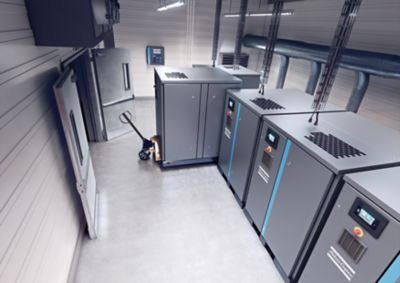Backup
Estimated reading time: 3 minutes
It might seem counterintuitive that reducing total operating costs and increasing the overall reliability of your compressor system would require adding more machinery. But if you only have one compressor powering your operation and that compressor must undergo routine maintenance (or experiences failure and requires emergency service), what happens to your production? It grinds to a halt, which equates to costly downtime and a substantial loss in revenue. Avoid this possibility by investigating a few of the backup options below:
Backup Compressor.
Having a backup compressor is essential to eliminating pauses in production. If one compressor fails, the backup compressor is ready to be brought into operation.
Lead and Lag
One compressor is assigned to be the “lead” compressor, while the other is designated as the “lag” compressor. When the lead compressor’s pressure drops to a predetermined point, the lag compressor takes over.
Create Redundancy
A second air compressor will operate in parallel to the primary compressor. Both compressors will be sharing the demand, and if the primary compressor fails, the second unit will continue to operate. This strategy minimizes wear and tear on both units.
Investing in a second compressor is essentially an insurance policy. Your main compressor has a lot of responsibility, so leaving things to chance? Not the wisest option.
Download the manual
- Challenger Campaign Brochure 7.6 MB, PDF


